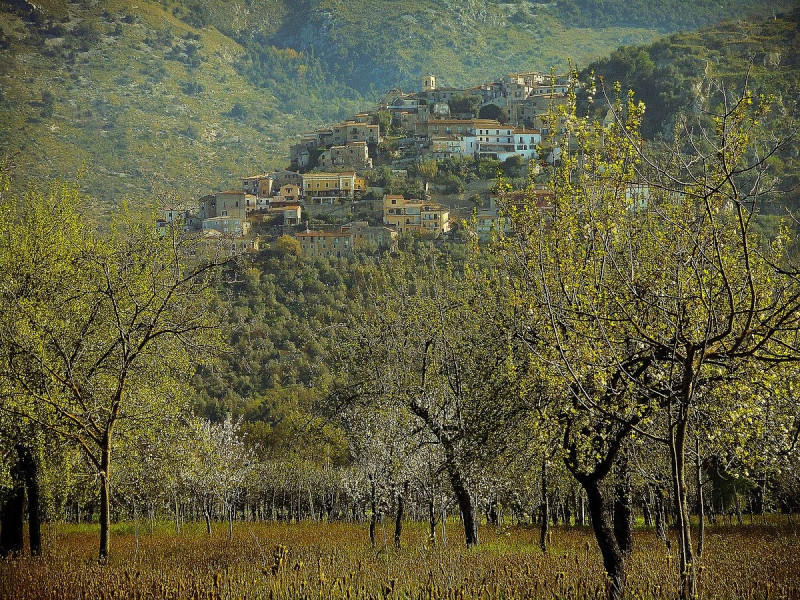Destinazioni - Comune
Roccasecca
Where
Roccasecca (Frosinone)
Roccasecca is a town and comune in the province of Frosinone, in the Lazio region of central Italy. It is the birthplace of St. Thomas Aquinas.
History
The history of Roccasecca is tightly bound to its strategic position, a "dry rocca" at the entrance to two narrow defiles that give access to the Valle di Comino, below the slopes of Monte Asprano, elevation 553 metres (1,814 ft), which provides a natural position to control the wide Valle del Liri. Remains of archaic perimeter walling attest to early fortified presence around the site. Roccasecca served as a way station for Roman legions and invading armies crossing the River Melfa, spanned by three ancient bridges here, of which remains persist, but the commune had its real beginnings in the early Middle Ages.
It is commonly remembered that Thomas Aquinas was born at Roccasecca, in 1225, in the castle of his father Landulf, count of Aquino, an important defensive structure that had been erected by Manso, abbot of Monte Cassino in 994, as part of the outward defenses of the abbey, some kilometres distant. The Abbot placed in charge of the fortified rocca a collateral branch of the counts of Aquino, whose main seat at Aquino lies 8 kilometres (5 mi) to the south; they retained their hold on the place through numerous battles, through the centuries.
After the mid-16th century some of the inhabitants descended to the valley to set up permanent housing there, giving rise to the frazioni Roccasecca Centro, Castello and Caprile. In the ensuing centuries the rocca of Roccasecca passed between the Angevin kings of Naples or the Aragonese, in intermittent contention with the Papal States for the resulting power over the Valle del Liri. Only in 1583 did Roccasecca gain some permanent security, when the counts of Aquino sold the rights to Giacomo Boncompagni, duke of Sora, the illegitimate son of Pope Gregory XIII (born Ugo Boncompagni), who made of it for the first time a papal fief. In the 17th century Roccasecca fell with the rest of southern Italy into Spanish Habsburg hands; in the 18th century, droughts, disease and excessive fiscal pressures served to drastically reduce the number of inhabitants. In the 19th century the illusory Napoleonic promises of liberty were dissolved in Carbonaria and brigandage.
With the unification of Italy in 1860 and the arrival in 1902 of a railroad line to Avezzano that linked Roccasecca with the larger world, emigration to the industrial north or farther abroad became easier, and the agricultural life of Roccasecca remained unbroken until World War II. The war was a dark episode, when Roccasecca was chosen for its rail station and railroad bridge across the Melfa, as the headquarters for the 14th Panzerkorps under General Fridolin von Senger und Etterlin, with as a consequence repeated Allied bombing, which fell heavily upon the commune's population, and culminated in a ferocious attack upon the rail station.
In the post-war period reconstruction brought some industry for the first time and modern redevelopment in the demolished area round the renewed railroad station. The seventh centennial of Thomas Aquinas' death brought a visit by Pope Paul VI, 14 September 1974.
External links
Media related to Roccasecca at Wikimedia Commons

